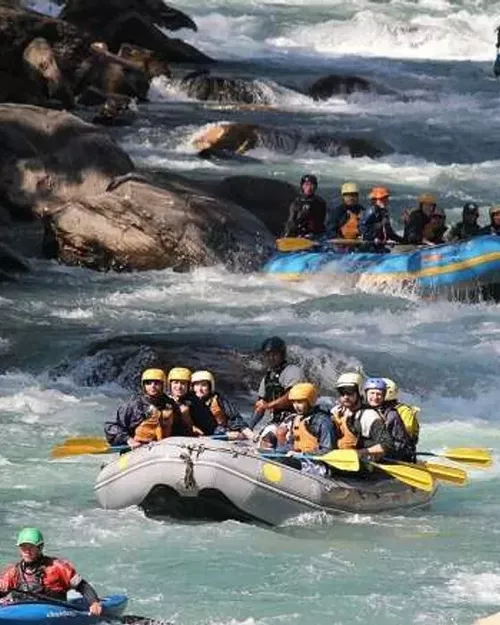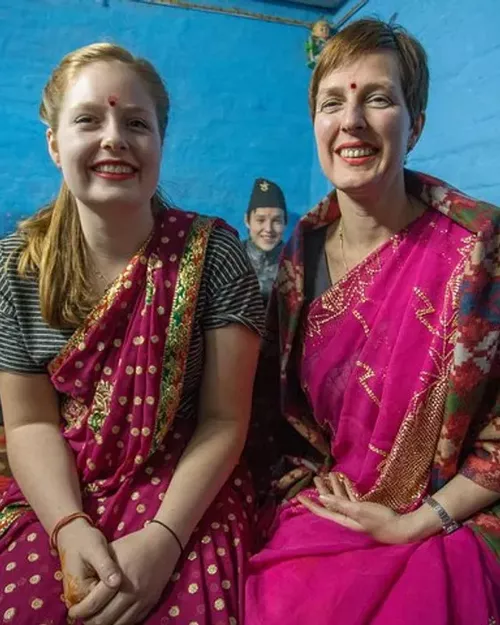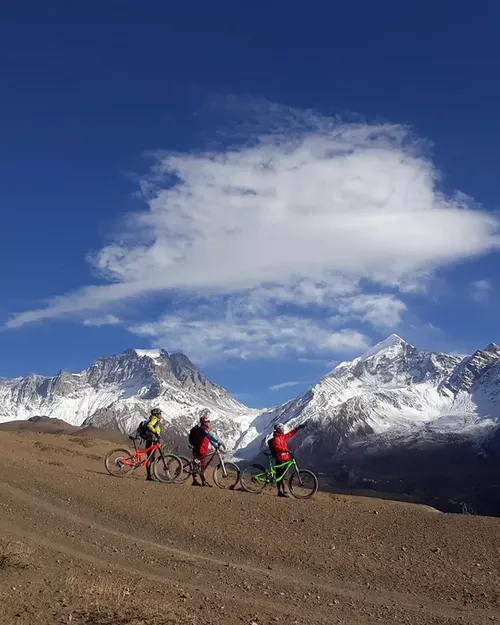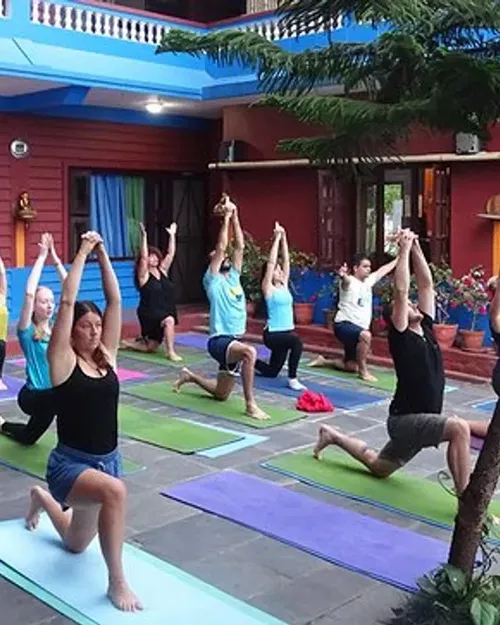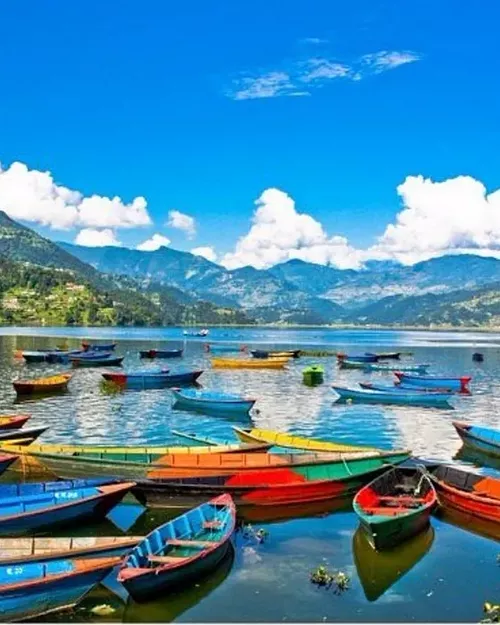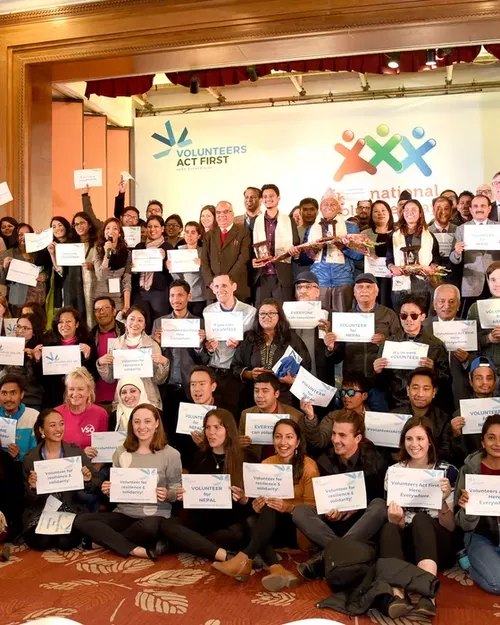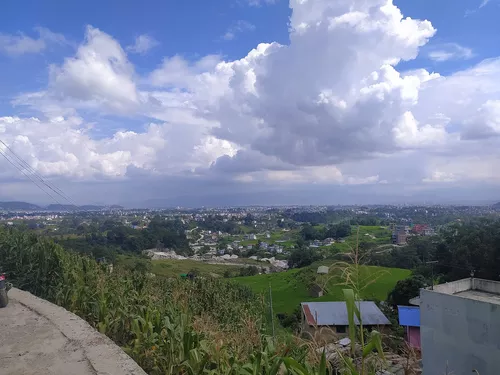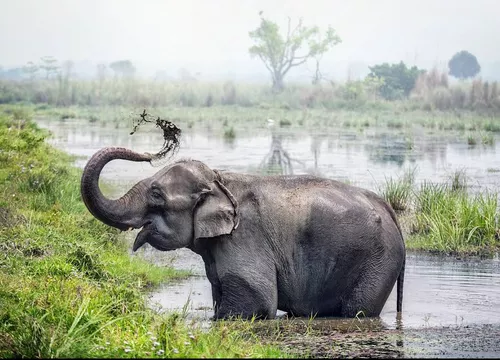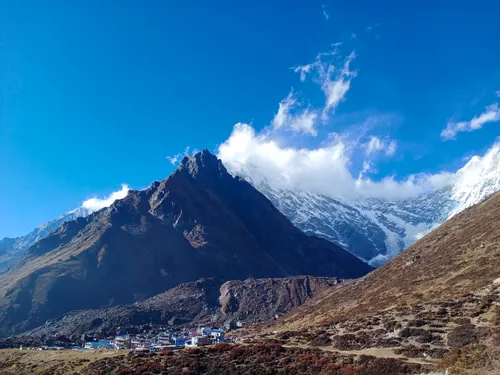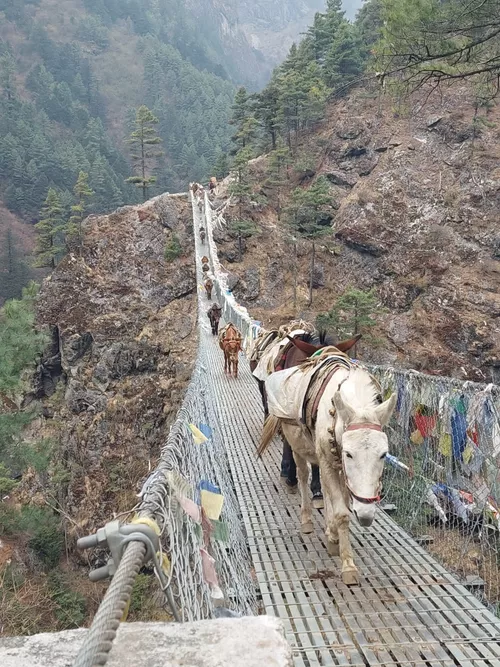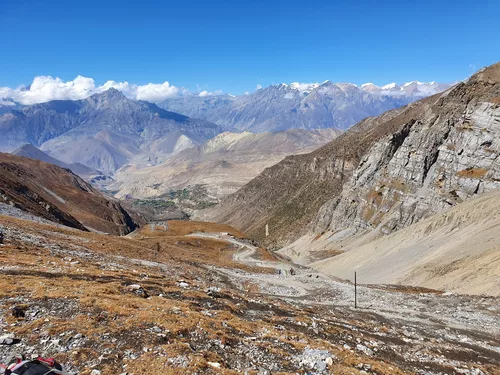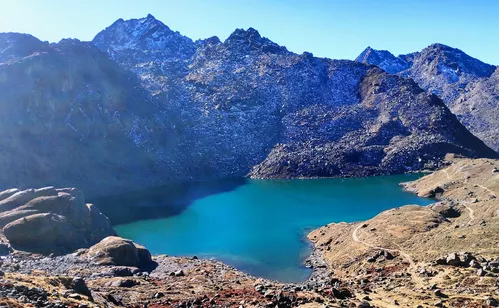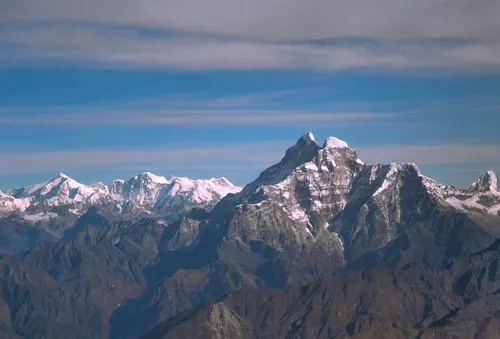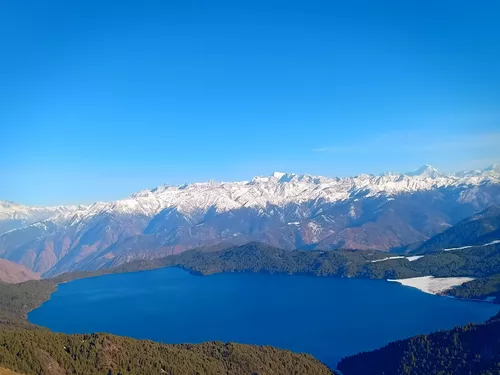Nepal is popular for
Nepal in next 3 month
Weather in Nepal
December in Nepal is cold with misty weather and moderate air quality.
Usual trip duration
For a 5-7 day trip to Nepal, you can explore the capital city of Kathmandu, visit the ancient city of Bhaktapur, go trekking in the Himalayas, and experience the rich culture and traditions of the Nepalese people.
Very budget friendly
Ideas To Plan Your Trip
Places To Visit
Places To Eat
Frequently Asked Questions About Nepal
The best time to visit Nepal largely depends on your interests and the regions you plan to explore. Generally, the autumn (September to November) and spring (March to May) seasons are considered optimal for most activities, including trekking and sightseeing.
During autumn, the weather is clear and stable, with mild temperatures and excellent visibility. This makes it perfect for trekking in the Himalayas, as the mountain views are at their best. Spring brings warmer temperatures and blooming rhododendrons, painting the hillsides in vibrant colors. This season is also ideal for trekking and exploring the cultural sites in the Kathmandu Valley.
The winter months (December to February) can be cold, especially at higher altitudes, but offer clear skies and fewer crowds. Trekking at lower altitudes is still possible, and the Kathmandu Valley experiences pleasant weather. The monsoon season (June to August) brings heavy rainfall, making trekking difficult and potentially dangerous. However, this season can be a good time to visit the rain shadow areas like Mustang and Dolpo, which remain relatively dry.
Nepal boasts a diverse range of attractions, from towering Himalayan peaks to ancient temples and vibrant cultural experiences. Here's a glimpse of the must-visit places:
| Attraction | Highlights |
|---|---|
| Mount Everest Base Camp Trek | An iconic trek offering breathtaking views of the world's highest peak and a challenging but rewarding experience. |
| Kathmandu Valley | A UNESCO World Heritage Site encompassing Kathmandu, Patan, and Bhaktapur, with ancient temples, palaces, and cultural sites. |
| Pokhara | A scenic lakeside city offering stunning views of the Annapurna range, boating opportunities, and adventure activities like paragliding. |
| Chitwan National Park | A biodiversity hotspot offering wildlife safaris to spot rhinos, tigers, elephants, and various bird species. |
| Lumbini | The birthplace of Lord Buddha, a sacred pilgrimage site with monasteries, temples, and the Maya Devi Temple. |
| Annapurna Circuit Trek | A classic trek that takes you through diverse landscapes, villages, and high mountain passes around the Annapurna massif. |
Reaching Nepal is primarily done through air travel, although overland routes are also available from India and China. Here are the main options:
| Mode of Transport | Details |
|---|---|
| By Air | Tribhuvan International Airport (KTM) in Kathmandu is the only international airport in Nepal. It is well-connected to major cities in Asia, the Middle East, and Europe. Airlines like Nepal Airlines, Qatar Airways, Emirates, and Air India operate flights to Kathmandu. |
| By Road (from India) | You can enter Nepal via several border crossings from India. The most popular entry points are:
|
| By Road (from China) | The main border crossing from China is at Rasuwagadhi. However, this route is generally more complex and requires special permits and organized tours. It's advisable to check with travel agencies specializing in Tibet-Nepal overland tours. |
Nepal offers a wide array of activities to cater to various interests and adventure levels. Here are some of the most popular:
- Trekking: Nepal is a trekker's paradise, with trails ranging from easy day hikes to challenging multi-day expeditions. Popular treks include Everest Base Camp, Annapurna Circuit, Langtang Valley, and Poon Hill.
- Mountaineering: For experienced climbers, Nepal offers the ultimate challenge of summiting some of the world's highest peaks, including Mount Everest, K2, and Kangchenjunga.
- Wildlife Safaris: Explore the jungles of Chitwan National Park and Bardia National Park in search of rhinos, tigers, elephants, and other wildlife.
- Cultural Tours: Discover the rich cultural heritage of Nepal by visiting ancient temples, monasteries, and palaces in Kathmandu Valley, Pokhara, and Lumbini.
- Adventure Sports: Indulge in adrenaline-pumping activities like white-water rafting, paragliding, bungee jumping, and canyoning.
- Yoga and Meditation Retreats: Find inner peace and rejuvenation by attending yoga and meditation retreats in serene locations amidst the Himalayas.
While Nepal itself is a treasure trove of experiences, its strategic location allows for exploring neighboring countries as well. Here are some nearby destinations worth considering:
| Destination | Approximate Travel Time | Highlights |
|---|---|---|
| Varanasi, India | 1-hour flight from Kathmandu, or overnight bus journey. | One of the oldest living cities in the world, a major pilgrimage site on the banks of the Ganges River, known for its ghats and spiritual atmosphere. |
| Darjeeling, India | Overnight bus journey from Kakarbhitta, Nepal. | A picturesque hill station in West Bengal, famous for its tea plantations, stunning views of Kanchenjunga, and colonial architecture. |
| Bhutan (Paro & Thimphu) | 1-hour flight from Kathmandu. | The Land of the Thunder Dragon, known for its unique culture, monasteries, and stunning Himalayan landscapes. Requires pre-arranged tours and visas. |
| Tibet (Lhasa) | 1.5-hour flight from Kathmandu, or overland via Rasuwagadhi border crossing. | The roof of the world, known for its monasteries, the Potala Palace, and unique Tibetan culture. Requires special permits and organized tours. |
Nepal offers a vibrant shopping experience, with a variety of handicrafts, textiles, and souvenirs to choose from. Here are some of the best shopping spots:
| Location | What to Buy |
|---|---|
| Thamel, Kathmandu | Handicrafts, trekking gear, pashminas, singing bowls, prayer flags, khukuri knives. |
| Patan (Lalitpur) | Metal crafts, wood carvings, thangka paintings, pottery. |
| Bhaktapur | Pottery, wood carvings, traditional masks, curd (Juju Dhau). |
| New Road, Kathmandu | Clothing, electronics, shoes, cosmetics. |
| Civil Mall, Kathmandu | Modern shopping mall with branded clothing, accessories, and restaurants. |
Nepalese cuisine is a delightful blend of flavors influenced by its neighboring countries. Here are some recommended restaurants and must-try local dishes:
| Category | Restaurant/Dish | Description |
|---|---|---|
| Traditional Nepali | Dal Bhat | A staple meal consisting of lentil soup (dal), rice (bhat), vegetables, and often meat curry. |
| Tibetan/Nepali | Momos | Steamed or fried dumplings filled with meat or vegetables, served with dipping sauce. |
| Nepali Snack | Newari Khaja Set | A platter of traditional Newari snacks like beaten rice (chiura), spicy potato curry (aloo tama), and various meats. |
| Restaurant | Bhojan Griha (Kathmandu) | Traditional Nepali restaurant offering authentic cuisine and cultural performances. |
| Restaurant | OR2K (Kathmandu & Pokhara) | Popular vegetarian restaurant with a diverse menu and cozy atmosphere. |
| Street Food | Panipuri & Chatpate | Available at local street vendors. Panipuri are crispy hollow balls filled with spiced potato and tangy water. Chatpate is a spicy and tangy snack. |
The visa policy for Nepal varies depending on your nationality. Most nationalities can obtain a visa on arrival at Tribhuvan International Airport (KTM) or at land border crossings. However, it's always recommended to check the latest visa requirements with your embassy or consulate before travelling. Here are some key points:
- Visa on Arrival: Many nationalities are eligible for visa on arrival. You'll need a valid passport, a passport-sized photo, and the visa fee in USD.
- Visa Fees: Visa fees vary depending on the duration of your stay. Common options include 15-day, 30-day, and 90-day visas.
- Online Application: You can also apply for a visa online before your arrival to expedite the process at the airport.
- Visa Extension: You can extend your visa at the Department of Immigration in Kathmandu.
- Gratis Visa: Citizens of SAARC countries (excluding Afghanistan) may be eligible for gratis (free) visas for a certain duration.
It's important to note that visa regulations can change, so always verify the current requirements before your trip.
The official currency of Nepal is the Nepalese Rupee (NPR). It is advisable to carry a mix of cash and cards for your trip. Here are some tips for managing your finances in Nepal:
- Currency Exchange: You can exchange foreign currency (USD, EUR, GBP) at banks, licensed money exchange counters at the airport, and in major tourist areas like Thamel in Kathmandu.
- ATMs: ATMs are available in major cities like Kathmandu and Pokhara, but may be limited in smaller towns and remote areas. It's advisable to withdraw enough cash before venturing into trekking regions.
- Credit/Debit Cards: Credit and debit cards are accepted in some hotels, restaurants, and shops in Kathmandu and Pokhara, but cash is preferred in most places.
- Tipping: Tipping is customary in Nepal for good service. You can tip porters, guides, and restaurant staff.
- Bargaining: Bargaining is common in tourist markets. Negotiate prices respectfully, especially when purchasing handicrafts and souvenirs.
Be aware of exchange rates and fees when exchanging currency or using ATMs. It's also a good idea to inform your bank about your travel plans to avoid any issues with your cards.
Learning a few basic Nepali phrases can greatly enhance your travel experience and show respect for the local culture. Here are some essential phrases:
| Phrase | Translation |
|---|---|
| Namaste | Hello/Goodbye |
| Dhanyabad | Thank you |
| Kati ho? | How much? |
| Sanchai chha? | How are you? |
| Sanchai chhu | I am fine |
| Mitho chha | It's delicious |
| Pani | Water |
| Chaina | No |
It's essential to consult with your doctor or a travel clinic well in advance of your trip to Nepal to discuss necessary vaccinations and health precautions. Here are some common recommendations:
- Vaccinations: Recommended vaccinations may include typhoid, hepatitis A, tetanus, diphtheria, and polio. Depending on your travel plans, your doctor may also recommend vaccinations against Japanese encephalitis, rabies, and meningitis.
- Malaria: Malaria is present in some parts of Nepal, particularly in the lowlands of the Terai region. Consult with your doctor about malaria prophylaxis.
- Altitude Sickness: If you plan to trek at high altitudes, be aware of the risk of altitude sickness (Acute Mountain Sickness - AMS). Ascend gradually, stay hydrated, and consider taking medication like Diamox.
- Food and Water Safety: Drink bottled or boiled water only. Avoid ice in drinks. Eat at reputable restaurants and avoid street food if you're unsure about hygiene standards.
- Travel Insurance: Make sure you have comprehensive travel insurance that covers medical emergencies, evacuation, and trip cancellations.
Nepal has a rich cultural heritage, and it's important to be mindful of local customs and etiquette to show respect. Here are some guidelines:
- Dress Code: Dress modestly, especially when visiting temples and monasteries. Avoid wearing revealing clothing.
- Footwear: Remove your shoes before entering temples, monasteries, and some homes.
- Public Displays of Affection: Avoid public displays of affection.
- Photography: Ask for permission before taking photos of people, especially in rural areas.
- Left Hand: Avoid using your left hand to eat or pass things, as it is considered unclean.
- Temples and Religious Sites: Walk around temples and stupas in a clockwise direction. Do not touch religious objects or climb on statues.
- Bargaining: Bargain respectfully and with a smile. Avoid aggressive bargaining.
- Respect Elders: Show respect to elders. Greet them with "Namaste" and a slight bow.



